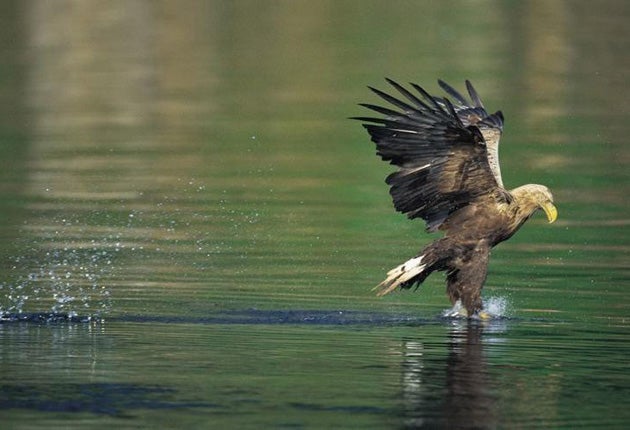Scheme to return sea eagles to Suffolk falls victim to budget cuts

Your support helps us to tell the story
From reproductive rights to climate change to Big Tech, The Independent is on the ground when the story is developing. Whether it's investigating the financials of Elon Musk's pro-Trump PAC or producing our latest documentary, 'The A Word', which shines a light on the American women fighting for reproductive rights, we know how important it is to parse out the facts from the messaging.
At such a critical moment in US history, we need reporters on the ground. Your donation allows us to keep sending journalists to speak to both sides of the story.
The Independent is trusted by Americans across the entire political spectrum. And unlike many other quality news outlets, we choose not to lock Americans out of our reporting and analysis with paywalls. We believe quality journalism should be available to everyone, paid for by those who can afford it.
Your support makes all the difference.A controversial project to reintroduce sea eagles to southern England has been scrapped in the first of the government budget cuts to impact on the natural environment.
The majestic predators have been successfully reintroduced into the Scottish islands, after being driven to extinction in Britain nearly a century ago. But this morning Natural England, the Government's wildlife agency, will announce that it is pulling out of a long-running scheme to bring back a breeding population of the birds to the coastline of Suffolk.
Ministers have made clear to Natural England that the £900,000 the project was expected to cost over six years will not be forthcoming. However, there is more to the decision than that.
The plan to bring back Britain's biggest birds of prey – they have eight-foot wingspans – to coastal East Anglia has been extremely unpopular with some of the region's farmers and landowners, who have feared for the safety of their livestock, and the decision to scrap it has been taken by Jim Paice, the Conservative Agriculture Minister, who is himself an East Anglian farmer.
Natural England officials and biologists, from the top down, are extremely disappointed at the cancellation of what they saw as a wonderful addition to England's bird life, much along the lines of the successful reintroduction of the red kite in the 1990s. They had just received the results of a feasibility study showing the re-establishment of a sea eagle population in Suffolk was possible, and were about to embark on a public consultation exercise about the scheme.
Also unhappy is the agency's partner in the project, the Royal Society for the Protection of Birds. "We are very disappointed, because this is a great project, and we think most people in Suffolk are behind it," said Mark Avery, the RSPB's conservation director. "Many Suffolk businesses would benefit from the increased tourism revenue these birds would bring.
"We are also afraid that this is just the first of many damaging cuts that will impact on the natural environment over the next weeks and months."
The sea eagle, Haliaeetus albicilla, also known as the white-tailed eagle, once bred all over Britain from the Isle of Wight to the Shetlands. It is much more of a lowland and coastal bird than the golden eagle of the Scottish Highlands. But it had been persecuted to extinction in England by the 19th century and retreated to a last stronghold in the Hebrides, where Victorian collectors further hunted it until it disappeared. The last nest was seen in 1916; the last native British sea eagle was shot, on Skye, two years later.
However, in 1975 a reintroduction scheme was begun with young birds from Norway being released on the island of Rum, and several years later the first breeding took place on the Isle of Mull. There are now more than 30 breeding pairs, which are a considerable tourist attraction in some places, as the birds are a spectacular sight. They mainly feed on carrion, fish and small mammals but they occasionally also take lambs.
The Natural England scheme intended to reintroduce the birds on the area of mixed heath, forest and farmland of the Suffolk coast known as the Sandlings, centring on the RSPB flagship reserve of Minsmere. The plan envisaged bringing young birds from Poland to Suffolk at the rate of 20 a year for five years, beginning in 2011.
Dr Avery said he did not think farmers' fears of livestock losses were justified. "This bird is not seen as a pest elsewhere in Europe, where it is very common," he said. "This is fear of the unknown, rather than well-grounded worries."
Join our commenting forum
Join thought-provoking conversations, follow other Independent readers and see their replies
0Comments